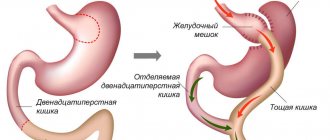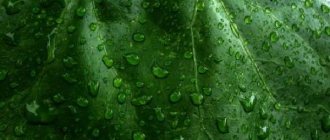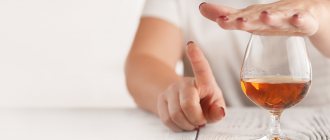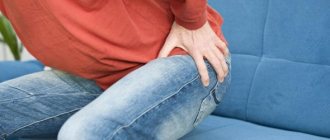Exclusively all diseases of the digestive tract fall under the general medical term “gastropathy”. Erythematous gastropathy, despite its frightening name, implies the initial stage of inflammation of the gastric mucosa.
Focal redness of the mucous surface is determined as a result of an endoscopic examination, when it becomes necessary to confirm any gastroenterological diagnosis for diseases of the digestive system. Thus, patients should understand that erythematous gastropathy is just a type of morphological change in the human stomach.
Endoscopy of the gastric mucosa for erythematous gastropathy
General rules
In the existing international classification of diseases erythematous gastropathy as an independent nosological form is absent. Rather, this term can be considered an endoscopic syndrome, characterizing the condition of the gastric mucosa, which is detected during an instrumental examination of the stomach ( fibrogastroduodenoscopy ). The syndrome of “erythematous gastropathy” is characterized by slightly pronounced hyperemia of the epithelial cover of the gastric mucosa and its increased vulnerability. In some cases, slight swelling .
At the same time, the deep layers of the mucosa are not involved in the process. In general, gastropathy is characterized by the absence of an inflammatory process/its insignificant severity, that is, there are no morphological changes in the gastric mucosa characteristic of inflammation. It is one of the most common violations of the integrity of the gastric mucosa. There are focal (localization of the process, limited to a small area) erythematous gastropathy and its diffuse form (when a large surface of the mucosa is affected).
Occurs under the influence of various damaging factors, the main of which are:
- Nutritional defects (consumption of foods that irritate the mucous membranes - fried foods, pickles, marinades, hot spices/seasonings, smoked foods, highly carbonated drinks).
- Alcohol abuse, smoking.
- Incorrect diet (overeating, dinner before bed, lack of breakfast, long intervals between meals).
- Frequent/prolonged stress.
- Taking pharmacological drugs ( aspirin , NSAIDs).
Erythematous gastropathy , identified during examination of the stomach, as such, in the absence of other specific changes in the mucous membrane, is not an indication for drug therapy. Rather, it should raise health concerns and alertness to the existing risk of developing stomach diseases. In fact, it is a signal of the need for lifestyle correction and, first of all, nutrition correction.
The diet for focal erythematous gastropathy involves normalizing the diet and moderation in food intake, excluding from the diet foods that irritate the mucous membrane (spices/seasonings, onions, garlic, vegetables with coarse fiber - radishes, turnips, pickles, marinades, smoked meats, fried foods , drinks containing carbon dioxide), avoiding drinking alcohol/smoking. Food/drinks should not be too hot or cold. As a rule, such restrictions in the diet for 2-3 weeks normalize the condition of the gastric mucosa.
The diet for erythematous gastropathy of the diffuse (widespread) form provides for more stringent restrictions. Diet No. 1 can be taken as a basis , which, being physiologically complete, provides for moderate sparing of the gastric mucosa from various unfavorable factors (mechanical, chemical, thermal). At the same time, in the first 7-10 days, a pureed version of the diet is recommended with a gradual transition to the non-mashed version.
Dietary nutrition includes:
- Completeness of the diet (the amount of food nutrients must correspond to physiological standards).
- Exclusion of products that increase the secretion of gastric juice/irritate the mucous membrane - fresh baked goods, fatty foods, various spices/seasonings, strong meat/fish broths, onions, garlic, canned food, fast food, smoked meats, as well as raw vegetables, especially those containing coarse vegetable matter. fiber - legumes, radishes, rye bread, radish, celery root. Alcohol-containing drinks, strong tea, and coffee are excluded.
- Limit salt and consumption of salty foods (pickles, marinades).
- Fractional nature of meals - long breaks between meals are not allowed, portions are small.
- Culinary processing of products includes steaming and boiling. Fried food is strictly prohibited. During periods of exacerbation, dishes are served pureed.
- Dishes should be warm (35-40 degrees), but not hot/cold.
It is recommended to include in the diet foods that do not stimulate secretion - light soups, boiled meat (poultry, rabbit, beef), low-fat white fish, milk, non-acidic (calcined) cottage cheese, steamed omelet/soft-boiled egg, pureed cereals/vegetables, jelly, rosehip decoction, weak tea.
Among cereals, preference is given to oatmeal, semolina and buckwheat, rice, and after 7-10 days the diet of cereals expands. In the presence of high acidity, it is recommended to limit easily digestible carbohydrates (sweets, sugar, jam, honey and other sweets) in the diet, which reduces secretory activity.
Additionally, it is recommended to take herbal decoctions that promote reparative processes in the mucous membrane (calendula, sage, chamomile, St. John's wort, plantain leaves, thyme) or pharmaceutical gastric preparations.
Causes of the disease
Gastric erythema and inflammation can be caused by several reasons:
- blood circulation disorders;
- infectious diseases;
- chemical burns;
- medicinal (medicinal) gastritis;
- metabolic defects due to other diseases;
- poor nutrition;
- various irritating factors (alcoholic drinks, smoking).
Stress resistance and daily routine are also of great importance.
The possibility of the occurrence of the disease is determined by protective gastric factors, the resistance of the body as a whole and genetic characteristics.
View gallery
Authorized Products
The diet for erythematous gastropathy includes:
- Soups made from non-concentrated broths with the addition of pureed cereals/vegetables.
- Low-fat varieties of red meat/fish - chicken, rabbit, veal, turkey, beef, cod, pike perch, pollock, hake.
- Soft-boiled eggs/steam omelet.
- Dried white bread, white bread croutons.
- Puree porridges cooked in water with milk/cream (oatmeal, semolina, rice), a little later - buckwheat.
- Vegetables/fruits that can be consumed in boiled and pureed form are beets, zucchini, potatoes, carrots, and pumpkin. Fruits - sweet/ripe baked/boiled.
- Whole milk, cream, pureed calcined cottage cheese, curd soufflé.
- Sweet dishes include marshmallows, marshmallows, berry jelly, honey, jam, fruit mousses.
- For drinks, it is recommended to drink infusion of rose hips, juices with pulp (apricot, pear, peach), fruit jelly, weak tea with milk.
Table of permitted products
| Proteins, g | Fats, g | Carbohydrates, g | Calories, kcal | |
Vegetables and greens | ||||
| zucchini | 0,6 | 0,3 | 4,6 | 24 |
| cauliflower | 2,5 | 0,3 | 5,4 | 30 |
| potato | 2,0 | 0,4 | 18,1 | 80 |
| carrot | 1,3 | 0,1 | 6,9 | 32 |
| beet | 1,5 | 0,1 | 8,8 | 40 |
| pumpkin | 1,3 | 0,3 | 7,7 | 28 |
Fruits | ||||
| apricots | 0,9 | 0,1 | 10,8 | 41 |
| bananas | 1,5 | 0,2 | 21,8 | 95 |
| nectarine | 0,9 | 0,2 | 11,8 | 48 |
| peaches | 0,9 | 0,1 | 11,3 | 46 |
| apples | 0,4 | 0,4 | 9,8 | 47 |
Berries | ||||
| strawberry | 0,8 | 0,4 | 7,5 | 41 |
| raspberries | 0,8 | 0,5 | 8,3 | 46 |
Cereals and porridges | ||||
| buckwheat (kernel) | 12,6 | 3,3 | 62,1 | 313 |
| semolina | 10,3 | 1,0 | 73,3 | 328 |
| cereals | 11,9 | 7,2 | 69,3 | 366 |
| white rice | 6,7 | 0,7 | 78,9 | 344 |
Flour and pasta | ||||
| noodles | 12,0 | 3,7 | 60,1 | 322 |
Bakery products | ||||
| white bread crackers | 11,2 | 1,4 | 72,2 | 331 |
Confectionery | ||||
| jam | 0,3 | 0,2 | 63,0 | 263 |
| jelly | 2,7 | 0,0 | 17,9 | 79 |
| marshmallows | 0,8 | 0,0 | 78,5 | 304 |
| paste | 0,5 | 0,0 | 80,8 | 310 |
| Maria cookies | 8,7 | 8,8 | 70,9 | 400 |
Raw materials and seasonings | ||||
| honey | 0,8 | 0,0 | 81,5 | 329 |
| milk sauce | 2,0 | 7,1 | 5,2 | 84 |
Dairy | ||||
| milk | 3,2 | 3,6 | 4,8 | 64 |
| cream | 2,8 | 20,0 | 3,7 | 205 |
| sour cream | 2,8 | 20,0 | 3,2 | 206 |
| curdled milk | 2,9 | 2,5 | 4,1 | 53 |
Cheeses and cottage cheese | ||||
| cottage cheese | 17,2 | 5,0 | 1,8 | 121 |
Meat products | ||||
| boiled beef | 25,8 | 16,8 | 0,0 | 254 |
| beef liver | 17,4 | 3,1 | 0,0 | 98 |
| boiled beef tongue | 23,9 | 15,0 | 0,0 | 231 |
| boiled veal | 30,7 | 0,9 | 0,0 | 131 |
| rabbit | 21,0 | 8,0 | 0,0 | 156 |
Bird | ||||
| boiled chicken | 25,2 | 7,4 | 0,0 | 170 |
| turkey | 19,2 | 0,7 | 0,0 | 84 |
Eggs | ||||
| chicken eggs | 12,7 | 10,9 | 0,7 | 157 |
Oils and fats | ||||
| butter | 0,5 | 82,5 | 0,8 | 748 |
Non-alcoholic drinks | ||||
| mineral water | 0,0 | 0,0 | 0,0 | — |
| coffee with milk and sugar | 0,7 | 1,0 | 11,2 | 58 |
| black tea with milk and sugar | 0,7 | 0,8 | 8,2 | 43 |
Juices and compotes | ||||
| apricot juice | 0,9 | 0,1 | 9,0 | 38 |
| carrot juice | 1,1 | 0,1 | 6,4 | 28 |
| pumpkin juice | 0,0 | 0,0 | 9,0 | 38 |
| * data is per 100 g of product | ||||
Clinical picture
Complaints from patients who were diagnosed with erythematous gastropathy during FEGDS directly depend on the prevalence of erythema in the stomach.
The focal form of erythematous gastropathy can, in most cases, be asymptomatic and detected by chance. With diffuse damage to the gastric mucosa, patients may present with the following symptoms:
- aching pain in the epigastrium that appears or intensifies after eating or drinking;
- heaviness in the stomach;
- nausea sometimes with vomiting, which brings relief;
- belching of air or rotten matter;
- weight loss;
- fast fatiguability;
- fragility and hair loss;
- lamination and fragility of nail plates;
- flatulence;
- intestinal colic;
- constipation or diarrhea;
- white or white-yellow coating on the tongue.
Some of the symptoms of gastropathy are associated with a slowdown in digestive processes, congestion in the stomach, fermentation processes, and some with anemia, which can occur due to impaired absorption of nutrients, iron and vitamins.
Fully or partially limited products
The diet for erythematous gastropathy excludes:
- Concentrated meat/fish soups with non-puréed vegetables/cereals, first courses with cabbage.
- Fatty fish/meat (goose, duck, pork, lamb), canned meat, animal fats, smoked meats and sausages.
- Fresh white bread, puff pastry, baked goods, black bread.
- Some types of cereals (barley, millet, corn, pearl barley), coarse large pasta, legumes.
- Products with an irritating effect on the gastric mucosa (white cabbage, radishes, mushrooms, radishes, rutabaga, onions, turnips, beans, sorrel, garlic, peas, canned vegetables), pickled/pickled vegetables.
- Spicy dishes, seasonings/spices, tomato sauce.
- Ice cream, chocolate, pastries, coffee, cakes, nuts, seeds.
- Sour/unripe fruits that are raw/with rough skin.
- Alcohol-containing/carbonated drinks, caffeine-containing drinks (coffee, cocoa, Pepsi, cola).
Table of prohibited products
| Proteins, g | Fats, g | Carbohydrates, g | Calories, kcal | |
Vegetables and greens | ||||
| vegetables legumes | 9,1 | 1,6 | 27,0 | 168 |
| swede | 1,2 | 0,1 | 7,7 | 37 |
| cabbage | 1,8 | 0,1 | 4,7 | 27 |
| green onion | 1,3 | 0,0 | 4,6 | 19 |
| bulb onions | 1,4 | 0,0 | 10,4 | 41 |
| cucumbers | 0,8 | 0,1 | 2,8 | 15 |
| canned cucumbers | 2,8 | 0,0 | 1,3 | 16 |
| white radish | 1,4 | 0,0 | 4,1 | 21 |
| turnip | 1,5 | 0,1 | 6,2 | 30 |
| horseradish | 3,2 | 0,4 | 10,5 | 56 |
| spinach | 2,9 | 0,3 | 2,0 | 22 |
| sorrel | 1,5 | 0,3 | 2,9 | 19 |
Mushrooms | ||||
| mushrooms | 3,5 | 2,0 | 2,5 | 30 |
Cereals and porridges | ||||
| corn grits | 8,3 | 1,2 | 75,0 | 337 |
| pearl barley | 9,3 | 1,1 | 73,7 | 320 |
| millet cereal | 11,5 | 3,3 | 69,3 | 348 |
| barley grits | 10,4 | 1,3 | 66,3 | 324 |
Confectionery | ||||
| candies | 4,3 | 19,8 | 67,5 | 453 |
Ice cream | ||||
| ice cream | 3,7 | 6,9 | 22,1 | 189 |
Cakes | ||||
| cake | 4,4 | 23,4 | 45,2 | 407 |
Raw materials and seasonings | ||||
| mustard | 5,7 | 6,4 | 22,0 | 162 |
| ginger | 1,8 | 0,8 | 15,8 | 80 |
| ketchup | 1,8 | 1,0 | 22,2 | 93 |
| mayonnaise | 2,4 | 67,0 | 3,9 | 627 |
| ground black pepper | 10,4 | 3,3 | 38,7 | 251 |
| chilli | 2,0 | 0,2 | 9,5 | 40 |
| sugar | 0,0 | 0,0 | 99,7 | 398 |
Dairy | ||||
| kefir | 3,4 | 2,0 | 4,7 | 51 |
Meat products | ||||
| pork | 16,0 | 21,6 | 0,0 | 259 |
| ham | 22,6 | 20,9 | 0,0 | 279 |
Sausages | ||||
| dry-cured sausage | 24,1 | 38,3 | 1,0 | 455 |
| sausages | 10,1 | 31,6 | 1,9 | 332 |
| sausages | 12,3 | 25,3 | 0,0 | 277 |
Bird | ||||
| smoked chicken | 27,5 | 8,2 | 0,0 | 184 |
| duck | 16,5 | 61,2 | 0,0 | 346 |
| smoked duck | 19,0 | 28,4 | 0,0 | 337 |
| goose | 16,1 | 33,3 | 0,0 | 364 |
Fish and seafood | ||||
| dried fish | 17,5 | 4,6 | 0,0 | 139 |
| smoked fish | 26,8 | 9,9 | 0,0 | 196 |
| canned fish | 17,5 | 2,0 | 0,0 | 88 |
Oils and fats | ||||
| animal fat | 0,0 | 99,7 | 0,0 | 897 |
| cooking fat | 0,0 | 99,7 | 0,0 | 897 |
Non-alcoholic drinks | ||||
| bread kvass | 0,2 | 0,0 | 5,2 | 27 |
| * data is per 100 g of product | ||||
Forms of erythematous gastritis
Erythematous exudative gastritis
The disease can be focal and diffuse, the second type is also called pangastritis. Among the methods of classifying the types of disease, there is also a division into a superficial and exudative, eosinophilic form (with this lesion, eosinophils accumulate on red spots, the disease occurs most often in allergy sufferers and those infected with parasites).
As for focal gastritis, the antral form is very common - damage to the antrum, located at the transition of the stomach to the intestines. With antral gastritis, reflux is often observed, associated with the reflux of the contents of the upper intestine into the stomach.
Separately, we should highlight a dangerous pathology called atrophic gastritis. It is often combined with the erythematous form, affecting the digestive glands. Atrophy can lead to severe deterioration of digestion.
Reviews and results
Diet for erythematous gastropathy is the main method of its treatment and, if carefully followed, according to patient reviews, allows you to normalize the condition of the gastric mucosa.
- “... I went to the clinic about frequent heartburn and flatulence. They prescribed many tests and underwent various examinations. Basically, everything is normal, except for the ultrasound report - dyskinesia of the gallbladder and the FGDS conclusion: erythematous gastropathy, without exacerbation, and they also revealed grade 1 dysbiosis. They advised me to switch to dietary nutrition (Table No. 1) and take a course of Lactoflor or Hilak-Forte. I switched to a gentle diet, I cook everything on a double boiler, I excluded all spicy foods, spices, and seasonings. I took a course of prescribed medications. The condition has improved significantly";
- “... After esophagogastroduodenoscopy: total erythematous-exudative gastropathy, moderate pathological changes, aphthous duodenopathy, which corresponds to the clinical picture of gastroduodenitis. Treatment was prescribed. I've been on a strict diet for a month now. In the first week I prepared pureed dishes, and then switched to not pureed, but well-cooked dishes. After eating this way, I felt an improvement, I couldn’t even imagine that the diet had such a good effect - there was no discomfort, no heartburn”;
- “... I underwent an endoscopy due to complaints of heartburn and heaviness in the stomach. The examination revealed: the gastric mucosa is smooth, pale pink, shiny. Peristalsis is symmetrical in all sections, active, the folds are elastic and evenly straightened. The mucous membrane is shiny, smooth, pink, diffusely hyperemic in the antrum, without defects. Conclusion: Erythematous gastropathy. They prescribed a gentle diet with the exclusion of all fatty, spicy, and rough foods. Additionally, I drink a decoction of calendula and chamomile. I hope that diet and herbs will soon normalize the gastric mucosa.”
Treatment with folk remedies
To cure this disease with folk remedies, herbal remedies are most often used to help heal wounds and relieve inflammation. One such substance is honey. It must be used in a special way - one teaspoon of candied honey should be placed in the mouth and then dissolved until completely dissolved, swallowing it little by little. A similar procedure is carried out three times a day.
The treatment of this disease is especially well known using a decoction based on three herbs: nettle leaves (responsible for wound healing), chamomile flowers (anti-inflammatory properties), oak bark (distinguished by its astringent effect). These components are used in dried form, mixed in equal proportions - one tablespoon at a time, pour boiling water (250 milliliters) over them, leave for a couple of hours, strain and drink chilled after each meal.
View gallery
Diagnosis of the disease
After reviewing the patient’s complaints, the specialist must prescribe a series of tests that will help correctly identify the disease. The patient may be asked to undergo:
- Blood analysis. Thanks to him, it is possible to find out information about the presence of inflammatory processes in the body. This will be indicated by an increase in leukocytes and ESR.
- Analysis of the acidity level of gastric juice . This will help the doctor choose the most effective treatment. Increased acidity requires taking special medications that should significantly reduce its level.
- Ultrasound of the digestive organ . Such a study helps determine the presence of ulcers and other pathologies in the stomach.
- Radiography . During the examination, a contrast agent is used, thanks to which the specialist can easily see the ulcer and other visible abnormalities in the organ. A barium mixture is usually used as an auxiliary composition.
- Fibroesophagogastroduodenoscopy. Makes it possible to examine the stomach from the inside. This method is considered the most informative of all existing today.
During the examination, the doctor may perform a biopsy to closely examine a sample of the affected tissue.
Diagnostics
Early detection gives a better chance of successful recovery. Gastropathy is usually diagnosed during tests for other disorders. The conclusion is made upon confirmation of morphological changes in the mucosa, characteristic of inflammatory processes, and only after fibrogastroduodenoscopy (FGDS).
Before diagnosis, you should follow some recommendations: do not drink alcohol, fatty foods, or carbonated drinks for several days. Eliminate, or at least reduce, the number of cigarettes you smoke.
Endoscopic examination sometimes causes erythematous gastropathy; in such cases it is called endoscopic syndrome; it usually does not require special treatment.
Complications
Incorrect treatment, self-medication, or ignoring the symptoms of the disease will inevitably develop into complications. Degradation of secretory tissue and its replacement with connective tissue will make it impossible to properly digest and grind food. Stagnation of stomach contents will aggravate damage to the mucous membrane. Cysts and tumors may develop that interfere with the activity of the gastrointestinal tract. It is quite possible to avoid such serious consequences if you treat the disease in a timely manner and lead a healthy lifestyle.
We invite you to familiarize yourself with the Porridge diet for weight loss: effective menus, reviews - minus 14 kg easily
Symptoms
Symptoms of the disease are:
- belching;
- heartburn;
- discomfort in the stomach after eating;
- nausea;
- sometimes vomiting;
- constipation and diarrhea;
- putrid taste in the mouth;
- deterioration of health, decreased performance, constant weakness and lethargy;
- loss of appetite, and as a result, weight loss.
If you have several symptoms, even if they do not cause significant discomfort, you need to see a gastroenterologist as soon as possible and undergo the necessary examinations in order to receive adequate treatment.











